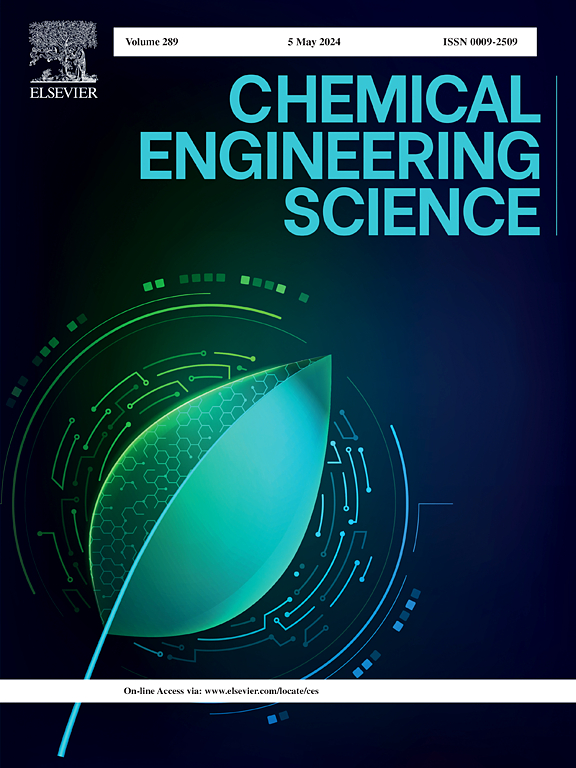The mechanism of oxygen intake by YBaCo4O7+δ – Based solid solutions
IF 4.1
2区 工程技术
Q2 ENGINEERING, CHEMICAL
引用次数: 0
Abstract
The oxygen sorption from air by Y0.8Ca0.2BaCo4O7+δ and Y0.8Ca0.2BaCo3FeO7+δ (114–type structure) is studied by nonisothermal TG measurements. In both oxides, oxygen intake occurs via a single-step reaction with an activation energy of 190–200 kJ/mol and a frequency factor of about 1015 s−1. The reaction mechanism is characterized by a 3D random nucleation and growth. The kinetic triplet values – activation energy, frequency factor, and reaction mechanism – remain nearly invariable regardless of the iron content. The data suggest that oxygen sorption occurs predominantly within the kagome layers, which agrees with the preference of iron to occupy the trigonal structural layers. The DFT calculations support kagome layers providing the favorable positions for the captured oxygen to reside in and jump over with the activation energy near 90 kJ/mol and, thus, confirm the oxygen sorption of 114-type oxides governed by the local structural reconstruction and stress effects induced by the growth of the oxygen-rich nuclei.

YBaCo4O7+δ基固溶体吸氧机理
采用非等温热重法研究了Y0.8Ca0.2BaCo4O7+δ和Y0.8Ca0.2BaCo3FeO7+δ(114型结构)对空气中的氧的吸附。在这两种氧化物中,氧气的摄取都是通过一步反应进行的,活化能为190-200 kJ/mol,频率因子约为1015 s−1。反应机理为三维随机成核和生长。动力学三重态值——活化能、频率因子和反应机理——与铁含量无关,几乎保持不变。数据表明,氧的吸附主要发生在kagome层内,这与铁优先占据三角形结构层是一致的。DFT计算支持kagome层为捕获的氧提供了有利的位置,活化能接近90 kJ/mol,从而证实了114型氧化物的氧吸附是由富氧核生长引起的局部结构重建和应力效应控制的。
本文章由计算机程序翻译,如有差异,请以英文原文为准。
求助全文
约1分钟内获得全文
求助全文
来源期刊

Chemical Engineering Science
工程技术-工程:化工
CiteScore
7.50
自引率
8.50%
发文量
1025
审稿时长
50 days
期刊介绍:
Chemical engineering enables the transformation of natural resources and energy into useful products for society. It draws on and applies natural sciences, mathematics and economics, and has developed fundamental engineering science that underpins the discipline.
Chemical Engineering Science (CES) has been publishing papers on the fundamentals of chemical engineering since 1951. CES is the platform where the most significant advances in the discipline have ever since been published. Chemical Engineering Science has accompanied and sustained chemical engineering through its development into the vibrant and broad scientific discipline it is today.
 求助内容:
求助内容: 应助结果提醒方式:
应助结果提醒方式:


